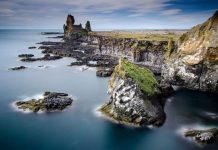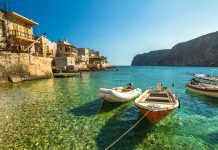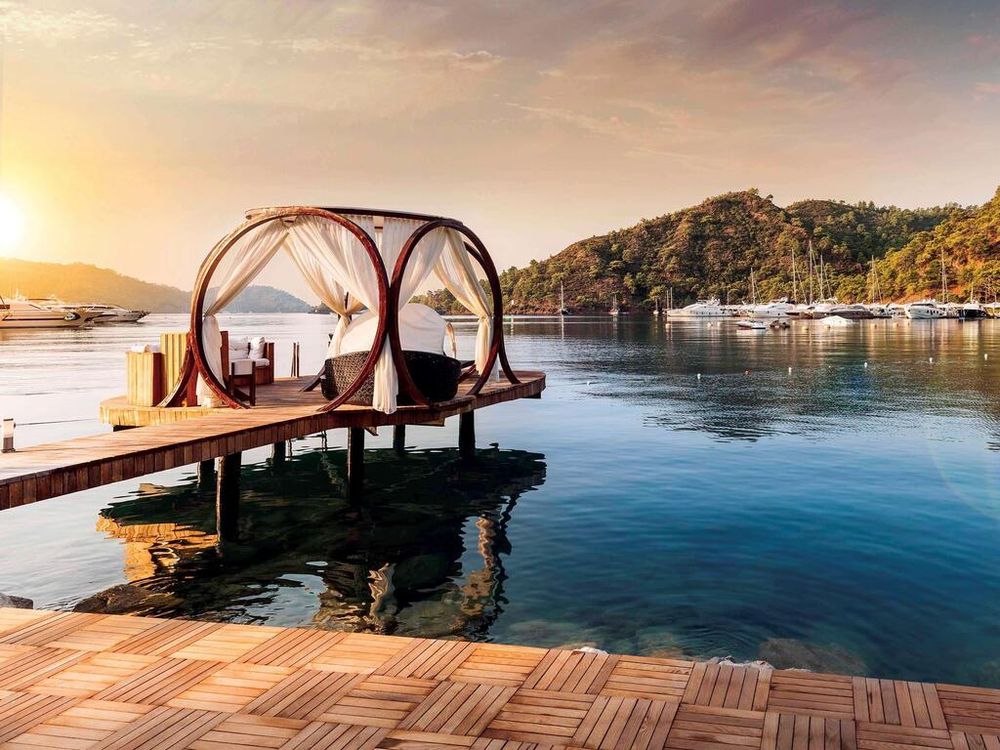In the village of Bogazkale there are ducks, cows and kids driving wheelbarrows along cobblestone streets. There are barnyards with Hittite and Byzantine gates and a constant feeling that the once great city is already in a state of complete decline. Most visitors come solely for the sake of Hattusa and Yazylykaya, which can be reached on foot, but there are other places to explore.
Surrounded by valleys and Hittite caves, eagle nests, butterflies and even a Neolithic fortress, the area around Hattusa is ideal for hiking. Walk 4 km east of Yazylykaya and climb Yazylykaya Dagi to see the sunset over the archaeological sites, or go swimming to the ponds by the Budakezyu River to cool off after a long day among the ruins.
At the end of the day, the silence in Bogazkale is broken only by random cars kicking up dust on the main street, and rural solitude may encourage you to stay another night. Apart from places to stay overnight, the only services in the village are several shops, a post office and a bank with an ATM.
It is not surprising that Hittite artifacts predominate among the exhibits of the small Museum of Bogazkale. The pride of the collection is two statues of sphinxes that once guarded the gates of Yerkapi in Hattus. They returned to Bogazkale only in 2011, and previously exhibited in Berlin and Istanbul.
HATTUSA
Mountainous, remote from the modern civilization of Hattusa was once the capital of the Hittite kingdom, stretching from Syria to Europe. At that time, it was a lively and beautiful city with a population of about 15,000 inhabitants and defensive walls 6 km long, one of the most powerful in the ancient world, and they were complemented by many watchtowers and secret tunnels.
As you move away from the village uphill, in the direction of the historical settlement, an expressive reconstruction of a part of the city appears before your eyes. Imagine the sense of a higher purpose that prompted the Hittites to drag stones to this isolated area far from the oceans and trade routes and to build engineering masterpieces that marked the beginning of a mighty empire.
Attractions
BuyukMabet Temple
The first attraction you get to is the grandiose complex of the Buyuk Mabet temple, built in the XIV century BC and destroyed around 1200 BC. This is the best preserved of the Hittite temples, but you still have to turn on your imagination at full capacity.
Climb up the hill from the ticket office, located opposite the remains of the building on the slope. When you are moving along a wide street for religious processions, there is an administrative room of the temple to your left. The time-worn green rock cube, presumably one of only two existing in the world, was a gift from Pharaoh Ramses II at the signing of the peace treaty after the Battle of Kadesh.
The main temple to your right was surrounded by storerooms, it is believed that they were three-storied. At the beginning of the XX century, huge clay storage tanks and thousands of cuneiform tablets were discovered in these rooms. Inspect the threshold stones at the base of some doorways, they have holes for gate posts and arc recesses from the constant opening and closing of doors. It is believed that this temple was a ritual altar of the deities Teshuba and Hebat, a large stone base of one of the statues has been preserved.
The fortress of Sary and Yenice Kale
About 250 m south of the Buyuk Mabet Temple, the road branches off; go to the right and follow the winding road up the hill. On the left, in the middle of the old town, you will see several destroyed buildings separated from the road. The ruins on the top – Sary Kale – probably represent Phrygian fortifications on the Hetgian foundation. On another rocky ledge there are the remains of Yeniche Kale, the royal residence or a small temple. You can climb to the top of them on the eastern slope.
Aslanly Kapy
In Aslanli Kapy, two stone lions protected the city from evil forces. This is one of at least six gates in the defensive wall of Hattusa, although they were most likely never completed. From here you will be able to see the best preserved fragments of fortifications stretching from the crest of the mountain to the Yer Kapa Gate and from there to the Kral Kapa Gate. These walls, which are 4,000 years old, serve as an illustration of the Hittites’ engineering skills, which allowed them to either build in harmony with the natural landscape, or change this landscape – depending on the tasks set. Natural outcrops of rock were used as part of the wall, and massive ramparts were erected to create man-made fortresses.
HITTITES
Although the name of this tribe may conjure up images of skin-clad barbarians, the Hittites were a progressive nation that ruled over the vast Middle Eastern empire, conquered Babylon and challenged the pharaohs of Egypt more than 3,000 years ago. Apart from scattered written instructions in the Bible and on Babylonian cuneiform tablets, there was little evidence of their existence – until in 1834 a French traveler stumbled upon the ruins of the Hittite capital Hattusas.
During the excavations of 1905, remarkable works of art and Hittite archives were discovered, written in cuneiform on thousands of clay tablets. Based on these documents, historians and archaeologists were able to recreate the history of the Hittite Empire.
The original Indo-European Hittites invaded Anatolia around 2000 BC, conquering the local Hutts, from whom they inherited their culture and name. They settled in the Hittite capital, Hattus, and over the next millennium expanded and decorated this city. From about 1375 to 1200 BC, Hattusa was the capital of the Hittite Empire, which in its heyday shared power over Syria with Egypt and extended its influence all the way to Europe.
The Hittites worshipped more than a thousand different deities; the most important of which were Teshub, the god of thunder, and Hepatus, the goddess of the Sun. Cuneiform tablets opened a well-organized society in which more than 200 laws were in force. Bestiality was punishable by death, but thieves got off more easily – provided that they paid compensation to their victims.
Despite the victory in 1298 BC over Egypt, the empire degraded over the following centuries, destroyed by internal squabbles and new external threats, such as the Greek “peoples of the sea”. Hattusa was burned, and its inhabitants were scattered. Only the city-states in Syria survived, but only until they too were absorbed by the Assyrians.









